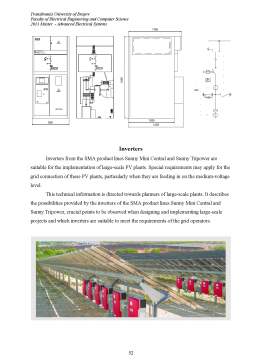Extras din disertație
Introduction
The world energy consumption has increased due to increase of world population, especially in the third world and in new industrialized countries.
At present, the world consumes over 8477.4 million tones oil equivalent (toe) of primary energy each year. The vast majority of this energy is obtained by combustion of fossil fuels, nuclear and hydroelectricity. There are problems with this present situation as the reserves of fossil fuels are limited and there is potential for global warming. Continually rapid growth is foreseen in the near future, with the world population rising from the present 6 billion to about 8 billion over the next 25 years, and is expected to grow perhaps to 10 billion people by the middle of 21st century. Such a population increase will have a dramatic impact on energy demand, at least doubling it by 2050, even if the developed countries adopt more effective energy conservation policies so that their energy consumption does not increase at all over that period. Sometime in the mid-21 st century the world will need a new, safe, clean and economical source of energy to satisfy the needs of both developing and developed nations. To cover the energy requirement, researches are being made for conventional or renewable energy.
One of the renewable energy is solar energy, which can be the main source or alternative energy source in the power generation.
The solar energy is clean energy and friendly to the environment. Beneficially solar radiation is equally distributed in any place on the earth. In fine details, the irradiance intensity is influenced by the geographic factors: longitude, latitude of the location. The location around the equator has good irradiation throughout the year, but the location around the pole particularly in winter season has little irradiation Based on these reason, the equipment of solar energy in the tropic area is more effective than other places (subtropics and pole). The survey, the observation and measurement must be made to assure the irradiance intensity of a location Although in the tropic area, the topography of the location and the weather also affect the irradiation. For example, the location at the mountain is often rain or cloudy. As a result, the total irradiation in one day is low. Photovoltaic (PV) generation provides a good solution for distributed energy generation (DEG). PV systems provide the highest power level in the middle of the day, which coincides with the peak power requirements on the utility grid, especially during the summer. Even though PV systems are intermittent resources due to their reliance on the sun shining, the times when the energy available from the sun is at its highest corresponds to the highest demands on the utility grid. This correlation makes PV generation highly suitable as a peaking source.
The major problem that must be overcome when connecting PV arrays to the utility grid is to extract and export the maximum power available with a high factor quality/price. Concerning the quality of energy, the power conditioning system (PCS) that is required to convert the DC output voltage to 50 or 60Hz AC voltage at the proper level to interface to the utility at the specified distribution level, should be selected with its control system adequately.
Solar technologies are broadly characterized as either passive solar or active solar depending on the way they capture, convert and distribute solar energy. Active solar techniques include the use of photovoltaic panels and solar thermal collectors to harness the energy. Passive solar techniques include orienting a building to the Sun, selecting materials with favorable thermal mass or light dispersing properties, and designing spaces that naturally circulate air.
The photovoltaic generation is the direct conversion of solar radiation into electricity, by means of solar cells. The solar cell is a p-n junction semiconductor under illumination; it produces a direct current depending on the weather conditions.
In order to determine how a photovoltaic system will operate at a given geographic location, the solar radiation at the location must be measured and characterized.The direct transformation from the solar radiation energy into electrical energy is possible with the photovoltaic effect by using solar cells. And because solar cells are made of semiconductor materials (usually silicon), it is useful to give a short brief about such materials together with concentrating on solar cells it selves: its operation, structures and characteristics.
Concept of PV cells
The history of photovoltaic dates back to 1839, when the French Physicist Edmond Becquerel first observed the photovoltaic effect. In 1886, American Charles Fitts constructed a selenium photovoltaic cell converting visible light into electricity with an efficiency of 1%. In the 1930s, the theory was developed for the electrical properties of silicon and other crystalline semiconductors.
Preview document
Conținut arhivă zip
- Solution Study of Connection a Group of Photovoltaic Panels to The Grid.doc































































